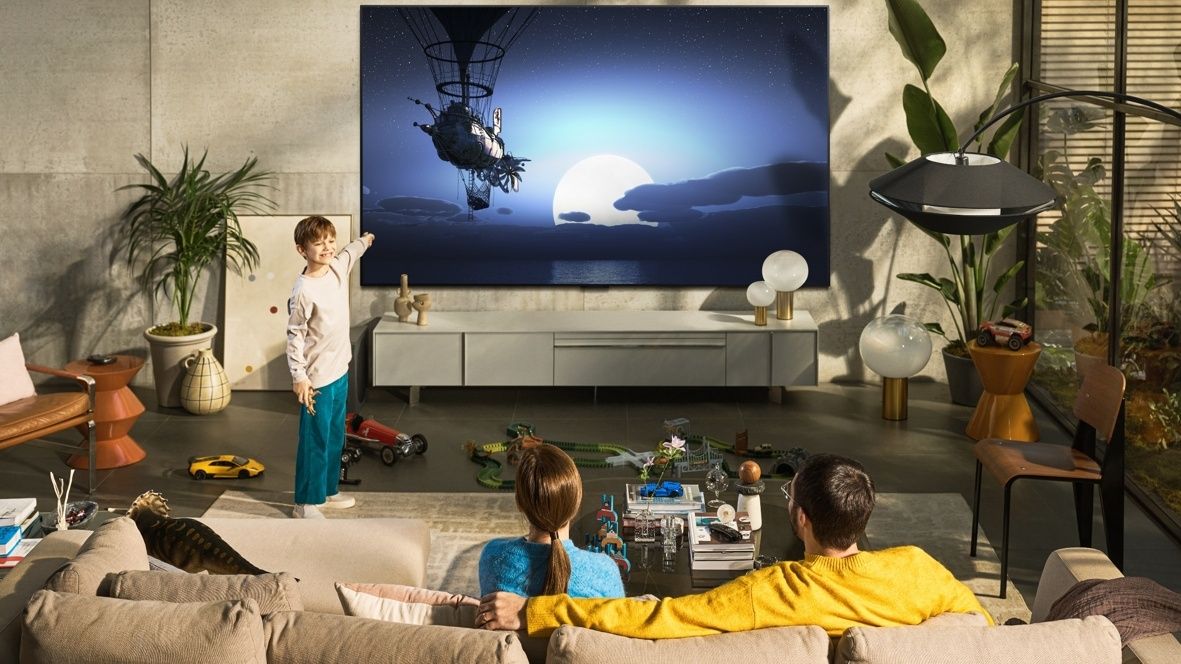
When you’ve been tempted to improve your own home theater by including top-of-the-line OLED TVs in an enormous measurement, you could have discovered your self quickly rethinking that concept when you noticed the value of them. OLED TVs at 77-inches, 83-inches and 97-inches are rather more costly than most LED TVs on the similar sizes. For instance, the 97-inch LG G2 prices a cool $25,000 / £25,000 / AU$48,000, although that is clearly essentially the most excessive of the bunch.
And sadly, it seems to be like that is not going to vary any time quickly. LG Show, which is the only real provider of OLED panels used within the majority of OLED TVs bought, has simply confirmed that it is delaying its plans to launch a ‘10.5G’ OLED manufacturing facility to FlatpanelsHD (opens in new tab). The following-gen ‘10.5G’ manufacturing unit tech is meant to have the ability to produce bigger OLED TV panels extra cheaply, bringing the value of biiiiiig OLEDs down.
Nevertheless, as reported by Korea Bizwire (opens in new tab), the brand new facility has reportedly been delayed till 2028, although LG Show hasn’t confirmed something. That is an enormous delay for one thing that was initially presupposed to arrive round 2021/2022, then was pushed to 2025/2026. Because of the maintain up, absolutely the earliest that we are able to count on to see outcomes is 2029.
However, the opposite factor that ‘10.5G’ OLED factories might be able to do is go even greater than 100-inches – a minimum of, that was the declare again in 2017, when all this was first introduced. And LG Show continues to be hinting at “super-sized” OLED TVs to return, in order that’ll be enjoyable, if/when it will definitely occurs.
Whereas the value of OLED TVs has usually been coming down fairly steadily lately, these worth deductions have stalled on account of rising inflation. There’s little or no distinction in worth between the brand new LG C3 and the launch worth of the LG C2, for instance.
So it seems to be like one thing else is required to assist spur worth drops on the dearer fashions, and the brand new manufacturing unit with extra environment friendly manufacturing capability was going to be it. With out it, it implies that one of the best 85-inch TVs is perhaps dominated by mini-LED fashions, that are getting increasingly more reasonably priced.
What’s ‘10.5G’ anyway?
In the intervening time, LG Show makes its TVs utilizing 8.5G amenities – these allow it to introduce the larger vary of sizes we have now now, from 42-inch OLED TVs as much as the 97-inch monster LG G2 mannequin.
OLED TV panels are produced in enormous single panels, then the person smaller screens that get utilized in TVs are minimize from these large panels. The large unique panels are identified by the awesomely sci-fi title ‘motherglass’.
After we discuss 8.5G or 10.5G manufacturing, we’re basically speaking in regards to the measurement of the motherglass. A better quantity means a bigger motherglass, which has two benefits: it is extra environment friendly (you produce extra TVs directly) and it offers you extra flexibility over sizing.
With a ten.5G facility, perhaps you are in a position to produce 4 77-inch OLEDs per motherglass as a substitute of the 2 per motherglass from 8.5G, bringing the price of every 77-inch display screen down as they undergo the method sooner. Or, perhaps that greater motherglass means you may make a single 113-inch OLED, which you could not do in any respect earlier than.
With increasingly more folks shopping for bigger sized TVs for his or her dwelling theaters, from 75-inches as much as 98-inches, having the ability to keep aggressive on costs can be necessary to OLED. I hope the know-how would not get left behind by this delay.
For now, in case you’re considering of getting a big-screen OLED, here is my expertise after proudly owning one for a yr.
